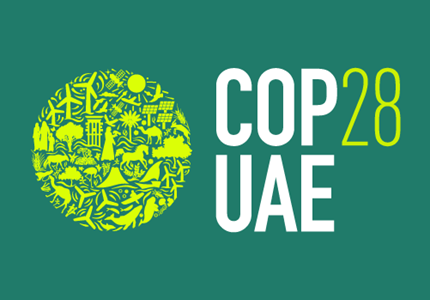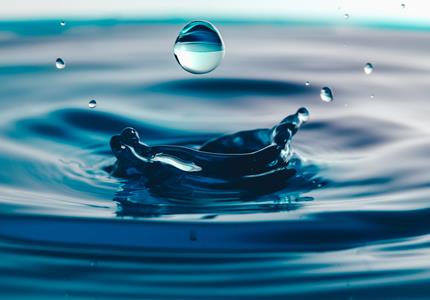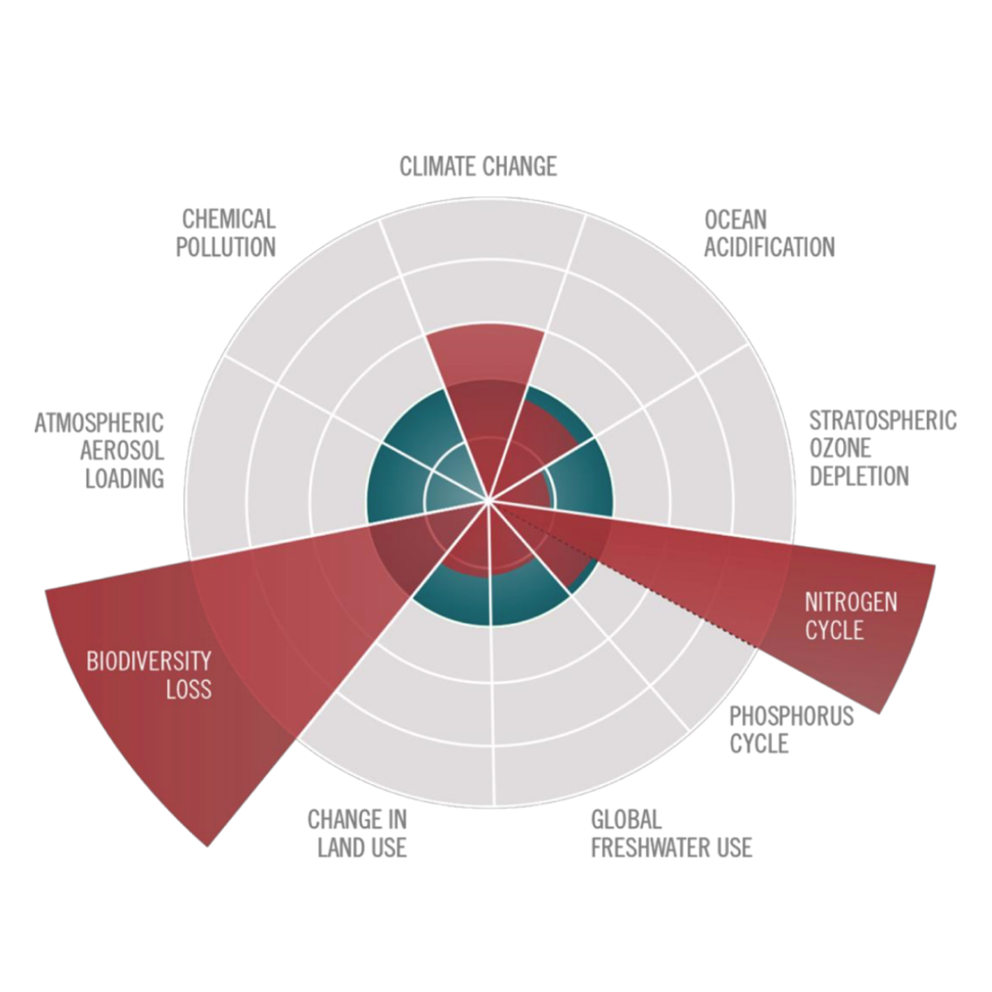
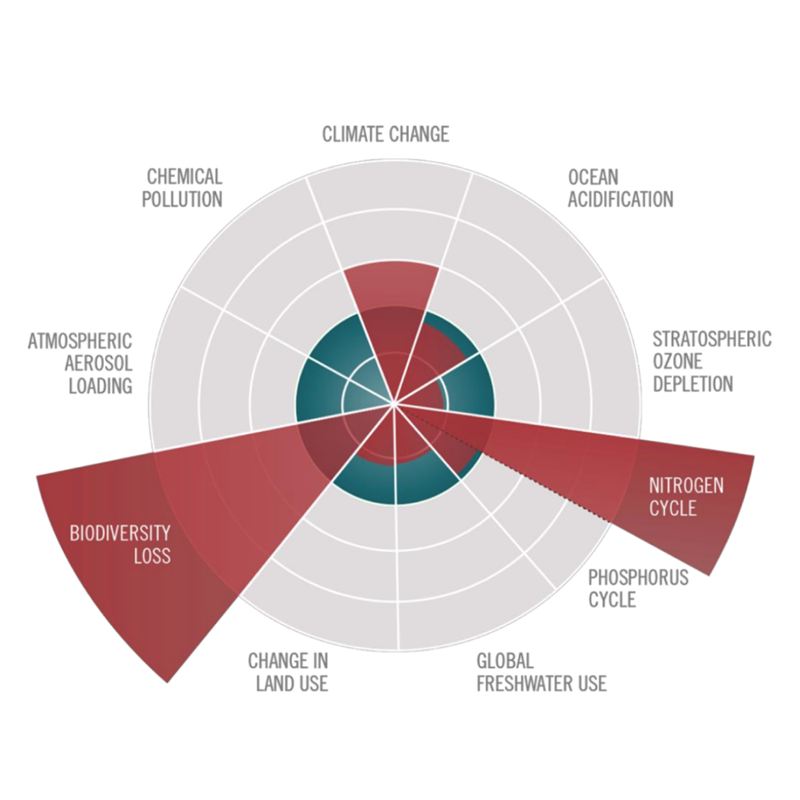
What’s the beef with the planetary boundaries?
We mentioned the term planetary boundaries in our recent biodiversity article, so I thought it only right we explained why they are so important.
What are planetary boundaries?
This concept was borne in 2009 by the former director of the Stockholm Resilience Centre, Johan Rockström. Johan, along with 28 internationally renowned scientists, set out to identify the boundaries that regulate the stability and resilience of the Earth’s system – put simply, trying to understand how our way of life impacts the planet on which we live. The full paper is called Planetary Boundaries: Exploring the Safe Operating Space for Humanity.
These quantitative planetary boundaries asses how we can continue to develop and thrive for generations to come without having a negative impact on the planet.
The nine boundaries are made up of three distinct phases: the safe operating zone, the danger zone and the tipping point. Crossing these boundaries increases the risk of generating large-scale abrupt or irreversible environmental changes.
The worst zone is the tipping point. The tipping point, in simple terms, is the point of no return in regard to irreversible damage.
The boundaries
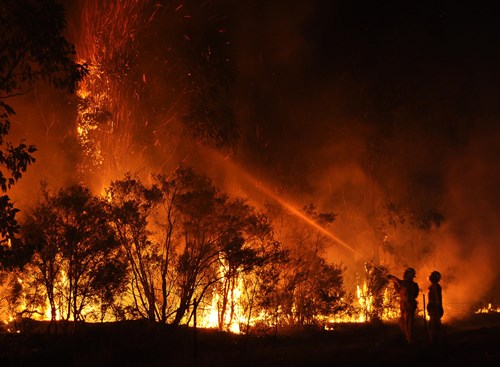
Climate change – this relates to the change in our planet’s temperature, and the main culprit is greenhouse gas (GHG) emissions. Prior to industrialisation our world was sitting in the Holocene period, where the temperature of the world was steady and moved +/-1 degree, and all was good.
This all changed with the rise of the industrial revolution and the arrival of GHGs. Back in 1988 we passed through the safe zone in regard to CO2 emissions. We know that when we hit 350ppm (parts per million) we entered the danger zone and at 415ppm we are at the middle of the danger zone, and we are beginning to see the impact of that.
Our planet is struggling. If you think back to the Australian bush fires in 2020, this was all about making our way towards the tipping point on climate change, and the sad thing is we lost billions of species, which ultimately was our fault.
A further instance is the ice caps – change in the ice caps has a huge impact on climate change as they go from self-cooling to self-warming; today’s climate is too hot to keep some of the ice caps and, as a result, we are losing them at a very fast rate. Unless we can cool the climate, melting will continue, as will destabilisation of the planet. The melting of the Greenland ice cap could raise global water levels by around 7m, threatening cities around the world, including New York and London.
Scientists have estimated 450ppm will send us into the tipping point, where warming becomes inevitable. The only way to reduce this is to reach a fossil fuel free world within 30 years.
Biosphere zones – this includes deforestation, biodiversity loss, freshwater usage and nutrients, which include the nitrogen and phosphorous cycle.
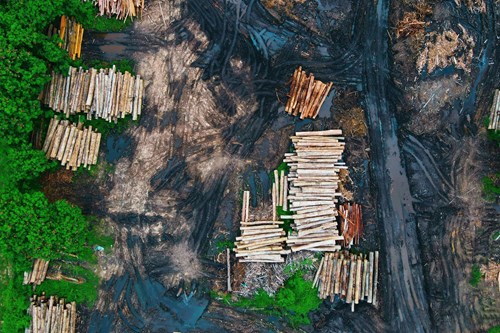
Deforestation – one major example of deforestation that we’re seeing is in the Amazon rainforest, which has been cleared for livestock and soya farming - a practice that has had a massive impact on the planetary boundaries. Large parts of the Amazon are drying out and the dry seasons are getting longer due to climate change and deforestation. Since 1980 the dry season has extended to four months, indicating exactly how huge an impact we’re having on the Amazon ecosystem.
Should the Amazon “die” this would release 200bn tonnes of carbon into the atmosphere – the equivalent of all the carbon emitted worldwide over the last five years.
Biodiversity – we have a more detailed article that you can read here with further information on this boundary, but it is very difficult to assess as it is very complicated. A single boundary is hard to pinpoint, but we do know we have already crossed into the danger zone.
Freshwater – as humans, we need around 3,000 litres of water a day – 50 litres for hygiene and drinking, another 100 for washing, 100 for industry usage, and the remaining 2,500 going towards food generation. The lower limit of the danger zone is 4,000 to 6,000, so whilst we are within the safe zone, we need to ensure that we are mindful of our usage.
Nutrient flow – these are the components of all living things and fertilizers. Leaching of these nutrients into our water systems has a detrimental impact on the ecosystems. One example of this that we’re seeing is in the number of fish in our water systems – fish that were once abundant are now scarce. Nutrients pollute the water systems as a signal that the planet is reducing its resilience. As our food production has increased and we have applied more fertiliser, the excess ends up in waterways, resulting in algae bloom. We have also been seeing dead zones in our oceans, in a couple of hundred places around the world. Overuse is the least known in terms of critical impact, and we are deep into the danger zone.

Ocean acidification – this is where the impact is the biggest. When we emit CO2 about a third ends up in the ocean; this changes the chemistry of the ocean, making it more acidic. The ocean is 26% more acidic, and it continues to be impacted. Crustaceans such as lobsters, mussels and molluscs are impacted by carbonates in the water. As history has shown us, global change in water can cause mass extinction and the issue is an unforeseen consequence into uncharted territory. Currently we are still in the safe zone, but pushing into the danger zone and on the way to potential mass extinction.
Human pollutants – this boundary, which includes, heavy metals, micro plastics, nuclear waste and anything we have made, is currently not quantified. Most have the potential to cause disruption if not controlled in some way. Aerosol particles have a boundary all of their own, and 75% of this is from fossil fuel combustion. This is reflected via hazy skies and something known as global dimming. Reduced sunlight due to this has caused some cooling and whilst on the face of it this may be thought of as good, it is not, as masking prevents us seeing the full impact of global warming. Air pollution kills 7m people per year and takes years off our life. Again, we do not know the boundary.
Ozone layer – this boundary is in a unique distinction where we are moving in the right direction. The thinning of the ozone layer was discovered in the 1980’s due to chemical pollution (remember acid rain?). This made us change our view and started political action. The boundary had seriously entered into the high-risk zone but, through global cooperation, we managed to get it back into the safe operating space. The great thing is the scientists raised the alarm and the world acted.
The one thing we know is that crossing the tipping point is not where we want to be, and we are fortunate that we can measure where we are and that we have the innovation to help reverse this. All is not lost, only our inability to act will let us down.
By the way, if you like a documentary…
Watch the Netflix documentary called Breaking Boundaries: The Science of Our Planet. Just over an hour long, it explains the concept of planetary boundaries far better than I ever can, along with the impact and what we can do to help. You also get a lot of David Attenborough screen time, which is always a bonus.
As Sir David says, we have the ability to live in a perfect home, we just have to act.
